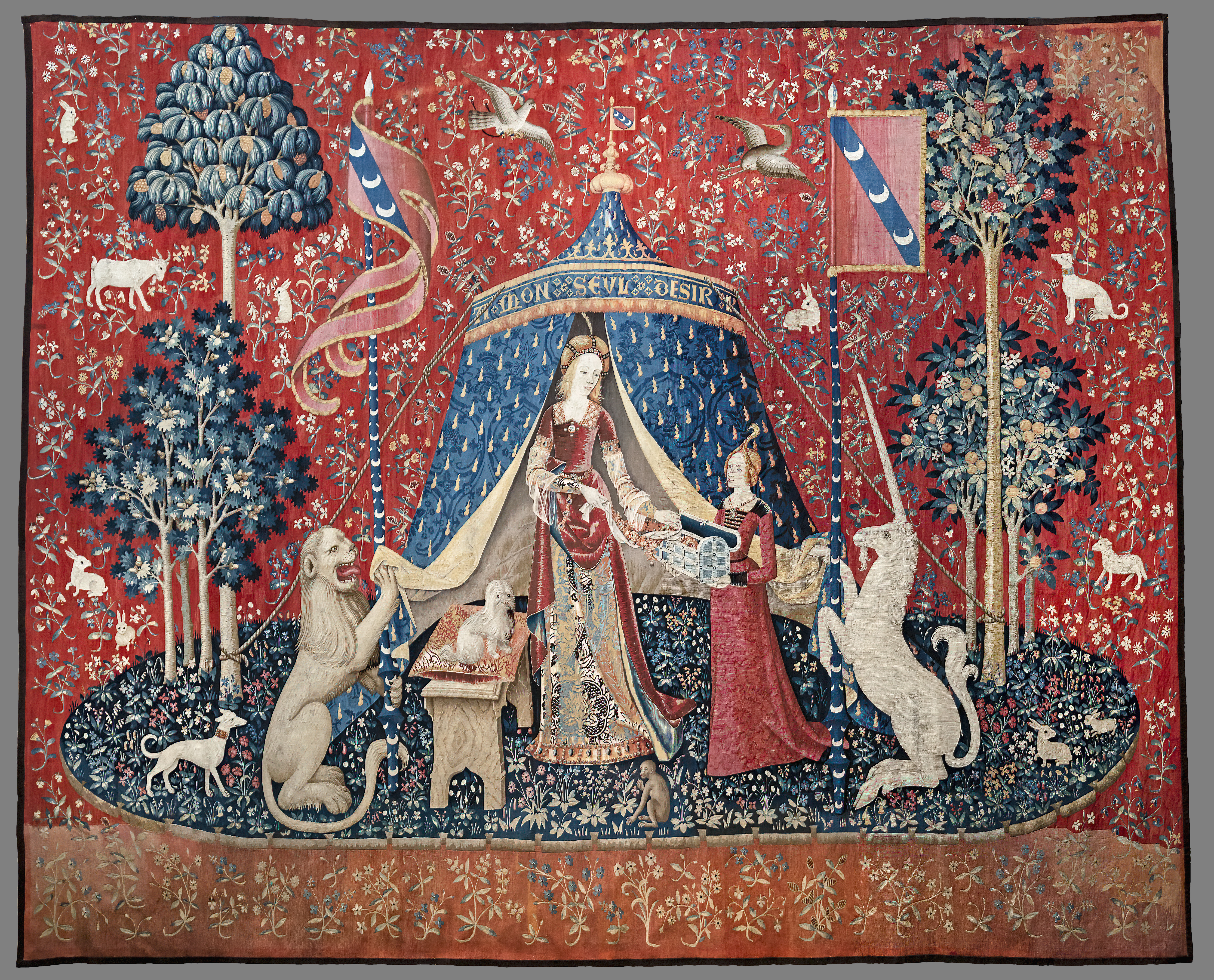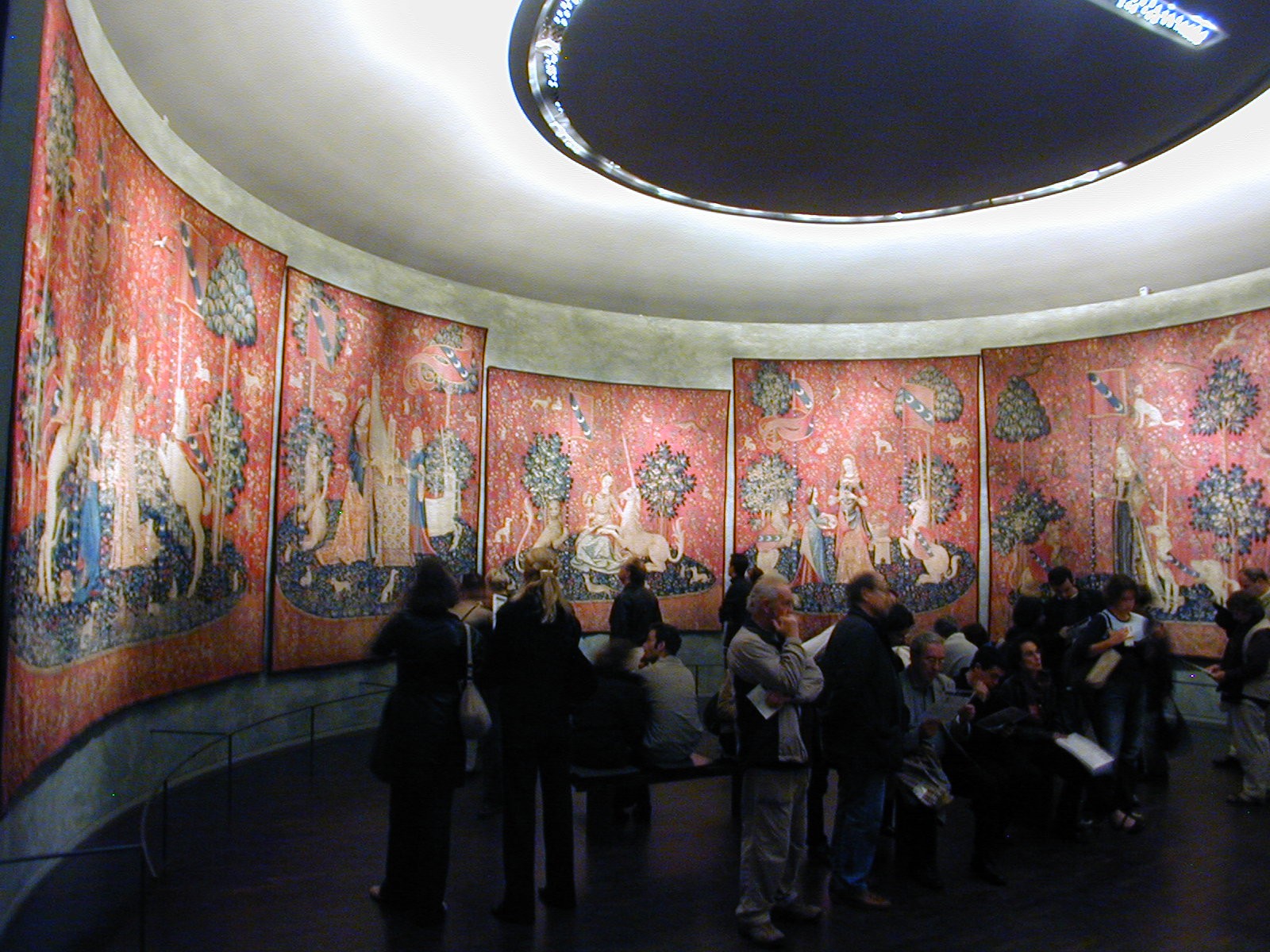Lady and the unicorn
Enlarge text Shrink text- LC database, Dec. 13, 2004(hdg.: Lady and the unicorn (Tapestries); usage: Dame a la licorne, The lady and the unicorn, Die Dame mit dem Einhorn)
- Lady and the unicorn tapestries Web site, Dec. 13, 2004(Lady and the unicorn; woven ca. 1500, probably in the workshops of Flanders, in the medieval style of mille fleurs; since 1882 the tapestries have been housed in Paris in the once medieval cloister, the Musee de Cluny; represent the six senses--Hearing, Sight, Touch, Smell, Taste, and Love)
- Lady and the unicorn Web site, Dec. 13, 2004(Lady and the unicorn; six tapestries made around the 1500s in France; currently housed in Cluny Museum, France)
- Unicorn tapestries Web site, Dec. 13, 2004(late 15th century Unicorn Tapestries from the Museum of the Middle Ages--Thermes de Cluny in Paris; come from Broussac Castle in La Creuse; made for Jean Le Viste of Lyon, President of the "Cour des Aides"; The Lady and the unicorn; tapestries of wool and silk)
- Art histoey at Loggia; Lady with unicorn tapestries Web site, Dec. 13, 2004(ady with unicorn tapestries; 15th cent.; Musee de Cluny, Paris)
The Lady and the Unicorn (French: La Dame à la licorne) is the modern title given to a series of six tapestries created in the style of mille-fleurs ("thousand flowers") and woven in Flanders from wool and silk, from designs ("cartoons") drawn in Paris around 1500. The set is on display in the Musée de Cluny in Paris. Five of the tapestries are commonly interpreted as depicting the five senses – taste, hearing, sight, smell, and touch. The sixth displays the words "À mon seul désir". The tapestry's intended meaning is obscure, but has been interpreted as representing love or understanding. Each of the six tapestries depicts a noble lady with a unicorn on her left and a lion on her right; some include a monkey in the scene.
Read more on Wikipedia >
 Title
Title


 Mon seul désir (La Dame à la licorne) - Musée de Cluny Paris - la Dame.jpg)








